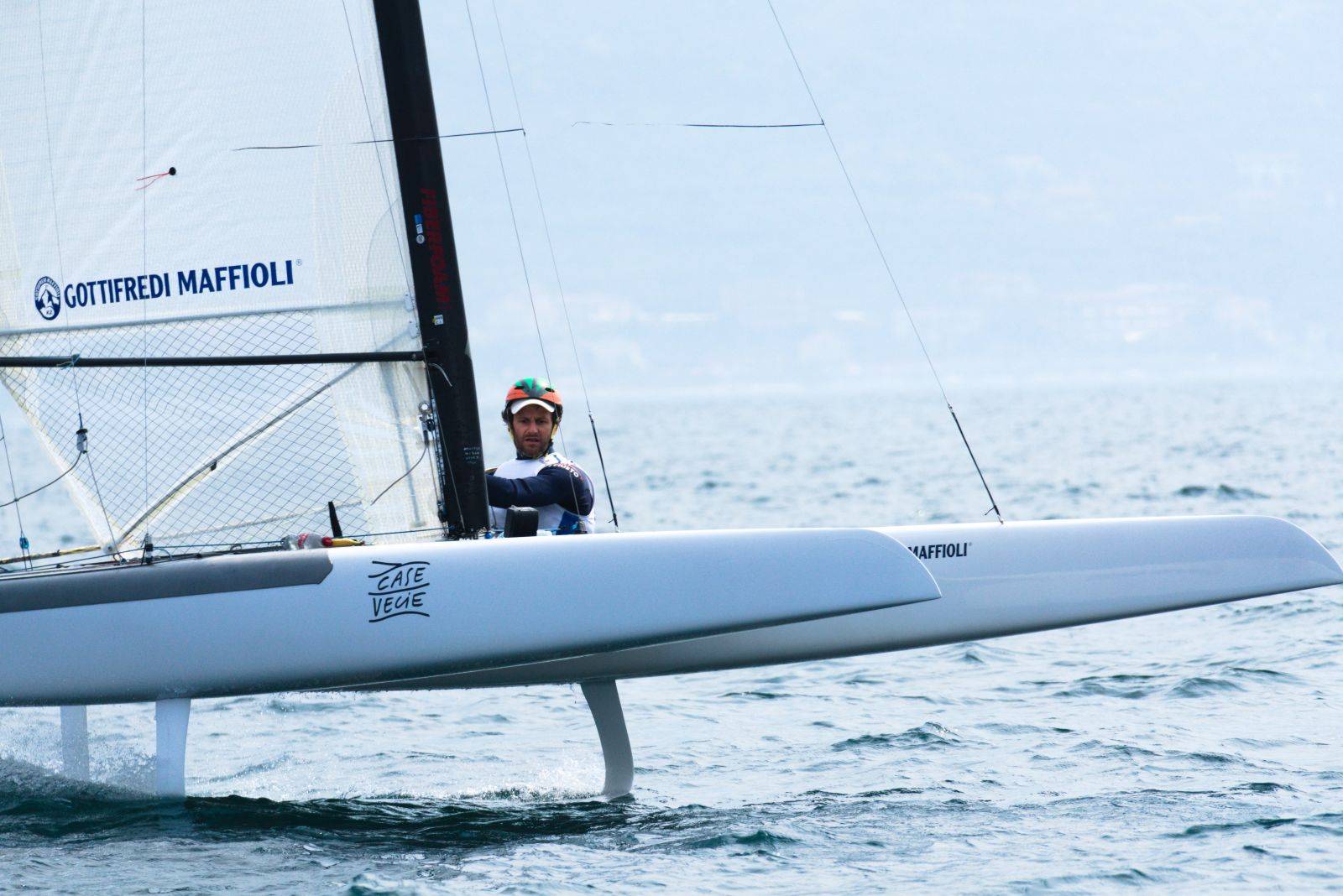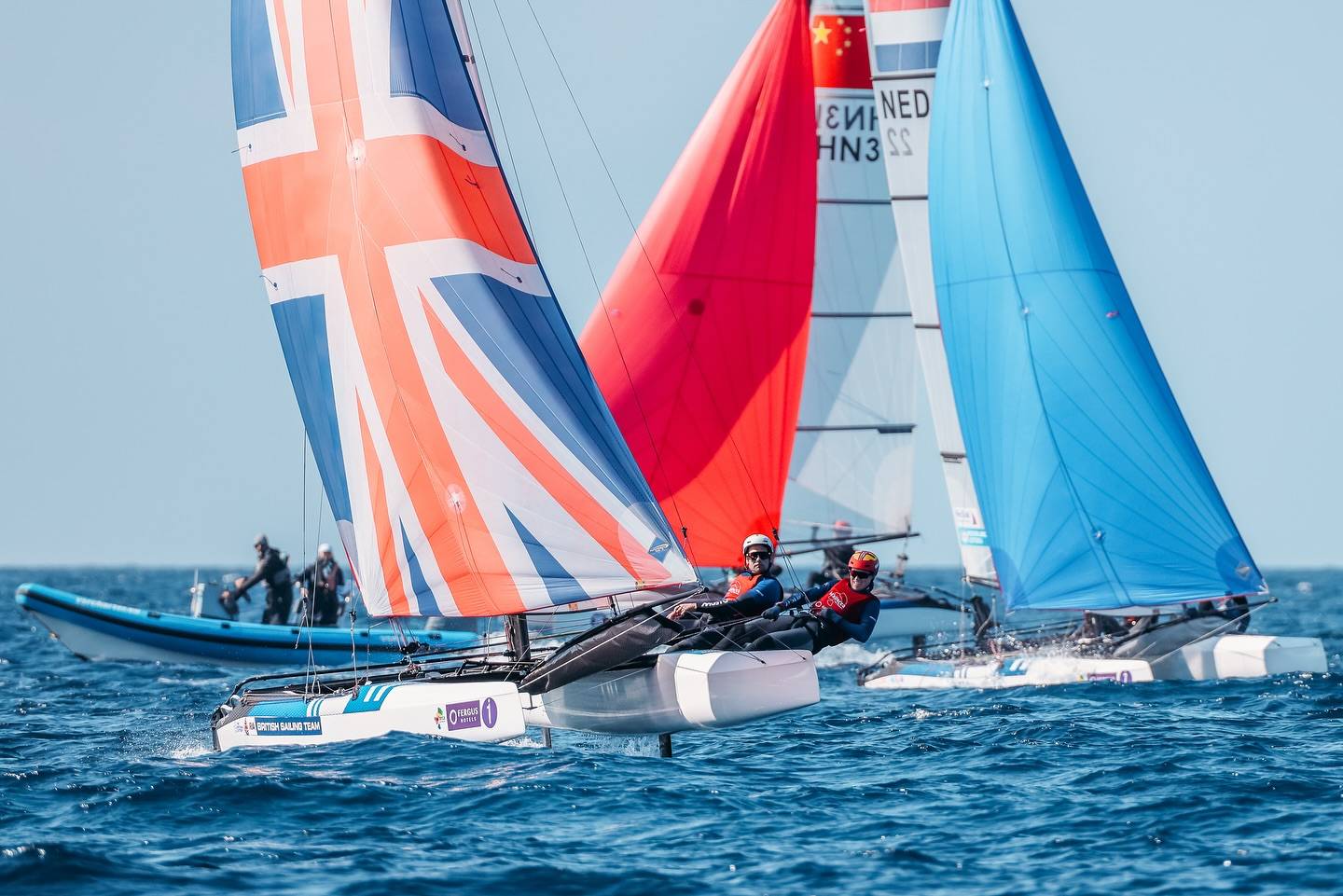Olympics: Nacra 17 secures a spot for Paris 2024
Photo: Jesús Renedo / Sailing Energy / World Sailing. – Nacra 17 Class will no be in revision for 2014 Pariis Olympic Games. This is good news for the sailors campaigning and a reassurance on their investment.
Hopefully the N17 wont be touched again, at least the new MKII platform. In terms of performance finally the N17 MKII has shown great downwind foiling but still missing flying to windward.
Some informal tests done here in Buenos Aires vs a D3 A-Cat , sadly I couldn’t be there as I was busy delivering one of my cats, but the info I have is Mehl outperformed Lange & Bora on the N17s by a good margin upwind.
Downwind was the same but for the N17s and its gennaker, going faster and deeper.
To our knowledge no one has consistently foil upwind while racing, not even in the breeze as seen at last Miami WC Live stream. Simply is not worth to fly upwind.
Hope sailors can find a way to get the MKII airborne upwind in the future , to make the Class even more fun and more technical of course.
Below World Sailing politics report sent by Bem Remocker / Nacra 17 Class.
——————-
——————-
49er, 49erFX, and Nacra 17 In For 2024!
World Sailing announced today that it has put up for review the events represented by the 470 M/W, Finn, and RSX M/W. By choosing not to review the other 5 events; Laser/Radial, 49er/49erFX, and Nacra 17, these events and the current equipment will remain for the games in Paris.
“We are thrilled with this result,” said president of 49er and Nacra 17, Marcus Spillane. “The political security this decision provides will allow us to focus on serving our sailors and sport by providing fair and entertaining racing for all to enjoy!”
The decision itself was very close, with 21 for and 17 against, showing how divided World Sailing Council is on the future of the sport. Just a few months ago, Theatre Style Racing format was defeated 20 to 21 by the same body, which was in some ways a precursor to this vote. How sailing comes together over the next two phases of this process will have a major impact on the strength and stability of Olympic Sailing for years to come.
The impetus for reviewing events derives from two IOC initiatives:
The IOC now reviews events, not just sports – each event must stand up to that level of scrutiny.
World Sailing has agreed to both participation and event gender equaility – since the 2020 events do not balance, change is required to comply. Putting events up for review is the first part of the process World Sailing has agreed to in order to make the change. There are three major sections of work:
Phase 1 – Decide what to review, and by default what would remain. The minimum number of boats up for review, by rule, was 4. The decision today is to review 5.
Phase 2 – Decide the Events (high level description of what the racing should be) for the
balance of the 5 events. This begins in Mid-March and concludes in a vote at the World Sailing mid-year meeting on May 15th in London.
Phase 3 – Decide which equipment should be used by the nominated events. This vote can occur at the November 2018 meeting, with provisions to extend for an additional year if new boat designs are required. Of the ten events and 350 athletes destined for Paris 2024, half are now known. The work begins to select both the Events and Equipment to fill the remainder of the slate.
The next step is the high level phase, where sailing will decide what to aim for while balancing a huge variety of factors. As we enter a phase of uncertainty for many current and aspiring Olympic sailors, and sailing as a whole, the task was outlined beautifully by Athlete Representative, Yann Rocherieux: “We trust in council to select events for 2024, where all sailors can have an opportunity to chase their dreams of becoming an Olympian, even if some sailors will have to change those another event than the one they are sailing now.”
———–





























I just heard that my great sailing friend and former CEO of Hobiecat Europe has passed. May The endless oceans…
...Report was sent by an F18 Sailor, if you want Hobies reported send your own, we'll publish as usual. Cheers.
Looks like in your report the Hobies are not really present. Suggest to rewrite the article.
Thanks for the great report Wik. Great battle.
If I correctly read the results the overall winner this year is a Hobie16